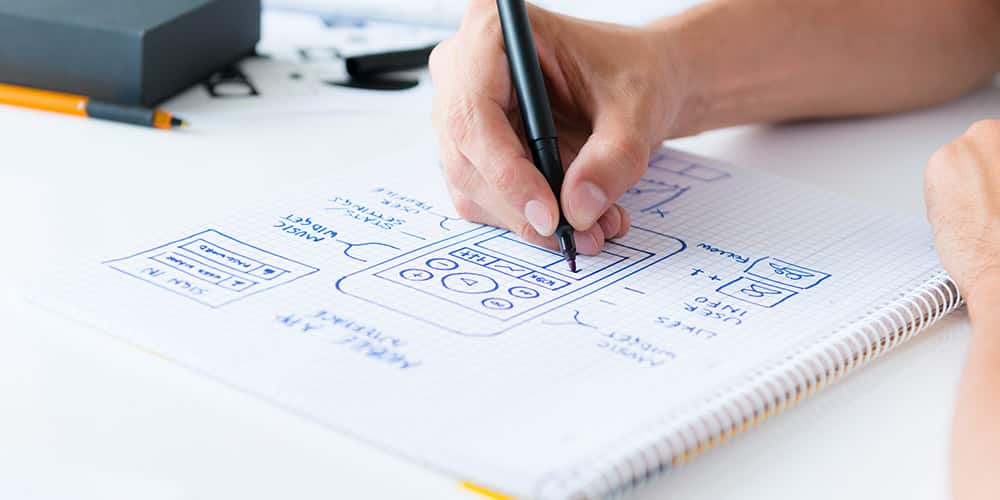
Paper prototyping is an easy and low-tech method of generating ideas and exploring design concepts, often used across a range of disciplines in information architecture, usability testing and rapid prototyping. In the world of websites, it is most commonly used for designing and testing user interfaces. Here, we discuss why it makes sense to use paper prototyping at the early design stage.
What are the benefits of paper prototyping?
It’s quick
Grabbing a pencil and sketching out a design on a piece of paper doesn’t take much time.
Instead of getting carried away with typography, colours and alignment, the ‘rough and ready’ approach allows a designer to focus on the core goals of the website and put aside considerations of aesthetics, at least to start with. Because it’s so quick, paper prototyping is a great technique for coming up with lots of ideas in a short space of time and allows for exploration of more concepts.
It’s easy
With paper prototyping, the drawings themselves are intended as nothing more than quick scribbles and sketches to illustrate a point, so there is no learning curve or prerequisite skills to the technique.
It’s disposable
There are two main benefits to the fact that the prototypes can be thrown away:
- Firstly, people are more likely to get actively involved if they think their lack of drawing skills don’t matter so much – they will take greater creative risks, be more willing to suspend belief, and not worry so much about making mistakes.
- Secondly, if somebody has sketched something roughly on a scrap of paper, others are more inclined to comment critically on it (as opposed to if the designer had clearly spent hours in mocking up a computer-generated design). This means that opinions are more likely to be honest and the design process can move forward more successfully.
It provides useful feedback at an early stage
Because it’s typically carried out at the very start of the design process, even before wire-framing, paper prototyping allows for the collection of useful feedback which can be used to make immediate changes to the interface as a whole.
At this stage, designers haven’t got too emotionally attached to their ‘babies’ and alternatives can be explored constructively and subjectively.
It saves money
Since all you need are a few pencils and a pad of paper, there are no complicated pieces of equipment or sophisticated software packages required. And because the process is so fast, it saves money in staffing costs too, compared to other methods of early concept design.
It’s easily modified
Anything that is quick, easy and disposable is also easy to modify, and with design work, making large-scale adjustments as well as fine-tweaking smaller aspects of a design are an integral part of the job. Ease of modification means that paper prototyping can help a business to get their interface on track right at the start of the process, rather than having to make expensive and time-consuming alterations later.
It’s collaborative
Making a successful, functional and aesthetically pleasing user interface typically requires input from several people or teams of people.
Paper prototyping allows for individuals to come together from a range of disciplines and look at the problem from a variety of viewpoints. Working in this way encourages not only a sense of community and collaboration, but also tends to come up with better, more creative solutions.
Despite the abundance of complicated software available to the designer today, there are still some things that are best done by a group of focused people with pencils and paper.
If you’ve never tried paper prototyping as a design technique, give it a go – you might be surprised at the level of creativity and depth of thought it provokes, and your finished user interface might well end up a richer and more functional experience for your website users.


